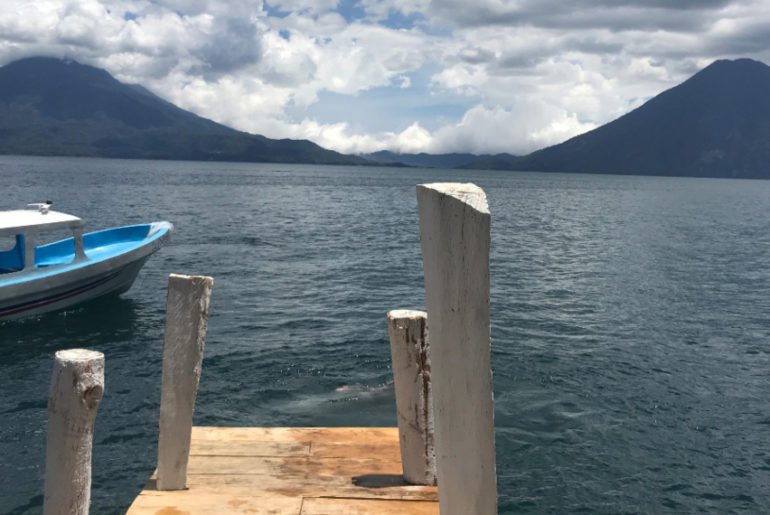Netflix’s new documentary about Guatemala, Guatemala: Heart of the Mayan World, is not made by Guatemalans — and it’s very apparent. From the first scenes, the film feels off. It begins with aerial footage of some of the historical sites in Guatemala as the narrator lists some examples about the natural beauty of the country and some facts about ancient Mayan civilizations; “developed one of the few elaborate writing systems in all America during the Pre-Columbian era”, “a culture that mastered astronomy and mathematics”, and “great advances in its artwork”. This narration accompanied by shots of Mayan ruins quickly transitions to footage of European-appearing women dancing in indigenous Mayan clothing; a foreshadowing of the whitewashing undertones throughout the film. The documentary takes its viewers on a tour of the most popular tourist destinations in the country (Tikal, Semuc Champey, Lago Atitlan, Rio Dulce, etc.) and relates them to skewed perspective of Mayan history and does not mention the word ‘conflict’ once. The narrator discusses the “fusion” between Spanish, foreign, and Mayan cultures in these areas without mentioning the strife and struggles associated with how these cultures came to mix through colonization and war 500 years ago, the more recent civil war and genocide that furthered the controversy, or the still very turbulent and disparity-filled present life for indigenous populations.
Of course, not every article, film, or story about Guatemala should be negative. In fact, more journalism and art should be produced to show the positives, innovations, cultures, and beauty that fill Guatemala. The producers, Ignacio Juansolo and Luis Ara who are from Uruguay told the Guatemalan newspaper Prensa Libre,
“Many times our countries are known for negative aspects. That is what the press almost always tells us. We are looking for what, it seems to us, reaches more people. The good and beautiful things of a country.”
However, there’s a difference between showing the positives of a country and what the documentary actually does which is cherry pick aspects of tourist destinations and packaging it as the core and the “heart” of Mayan people. The aspects of past and present Mayan life and culture that the film portrays are the parts that will impact a tourist’s trip (food, sites of Mayan ruins, public displays around holidays, and hiking destinations).
Again, showing the good without the bad, especially if it results in a boost to the economy of Guatemala through tourism, isn’t necessarily a bad thing. When it feels like the audience is legitimately being misled or being fed false and deceiving statements about conditions in the country though, it is problematic. One of the most obvious examples of this is in the film’s discussion of a mostly Mayan indigenous farming town in the department of Quetzaltenango; Almolonga. If you ask any Guatemalans who live near Almolonga, they will tell you not to eat the vegetables that come from the town because of the unhealthy use of pesticides. You can spot vegetables from Almolonga because of their huge size.
This is not the narrative in Guatemala; Heart of the Mayan World. The film shows footage of Almolonga as the narrator exclaims, “Guatemala is known as the land of abundance, due to the region’s climate conditions and the richness and fertility of the soil.” Images of farmers cultivating the land and washing giant perfect looking vegetables play to the statistics that “around 70% of the food that Guatemalans consume […] There’s something very interesting about the particular zone of the country. It’s the harvest of huge vegetables with sizes that exceed the world’s average.”
The problems with Almolonga are not solely tips that the producers could have gleaned by talking to people in the neighboring towns, but they are known and publicly documented issues. Even in 1998, researchers documented; “Almolonga, a township in the western highlands, produces vegetables for markets in Mexico and Central America. Almolonguenos make intensive use of limited cultivable land and abundant water resources, as well as sizable amounts of synthetic pesticides. Among Almolonguenos, congenital malformations, cancer, anemia, and respiratory infections await substantiated links to exposure to pesticides. The prevalence of infectious and parasitic disease and nutritional deficiencies- the dominant health concerns – may be heightened by excessive use of pesticides.”
One redeeming quality of the film, is that it does do a good job of capturing the diverse natural landscapes of the country; and the cinematography beautifully features drone footage and interesting perspectives of cities, nature, and animals. When people picture Guatemala, they might not picture the mountains and volcanoes of the west, the vast rainforests of the north, the Atlantic and Pacific beaches, waterfalls, and lakes all at once. However, even these components of the film are scattered with legitimate error. When talking about the volcanoes in Guatemala, the narrator boasts, “Con sus 37 volcanes, es el país con más volcanes en el planeta.” “With 37 volcanoes, it’s the country with the most volcanoes in the world.” This inexplicably incorrect fact only further propagates the feeling throughout the film that the audience is being deceived.
Guatemala does rank high on world statistic lists, especially poverty, malnutrition, and violence, which almost exclusively impact indigenous Mayan populations because of structural violence and discrimination in the country.
To emphasize, all films, documentaries, and mentions of Guatemala do not and should not need to include these negative characteristics. However, the specific way that Guatemala; Heart of the Mayan World portrays Mayan culture to boost tourism, does not come off as a positive view of the beauty of the country, but could be described as cultural appropriation of Mayan culture to boost tourism.

